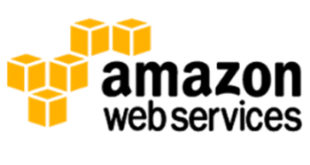We speak to Matthew Finnie, CTO at Interoute, to find out how the cloud helps collaboration and how it will be effected by IoT in the years to come.
How has the cloud market evolved over the past few years?
Over the past few years the challenge for enterprises on how to manage existing infrastructure has continued to grow, as they look to control their expansion into using cloud whilst at the same time managing their existing ICT estate that is not cloud ready. The enterprise move to the cloud is, however, getting a boost from new evolving cloud services.
These new services are different because they are based on the hyper-convergence of network and cloud computing resources. The network and compute is integrated to the extent that it can be treated as one. The challenges of hybrid infrastructure, as well as accommodating both what Gartner classifies as ‘mode 1’ Enterprise needs, (those uses requiring a high level of accuracy, safety and which typically have a more traditional and sequential architecture), and ‘mode 2’ needs, (the more agile, fast and changeable use cases), are overcome with new platforms that are much more geographically distributed, quickly discover and consolidate customers’ enterprise IT platforms, and at the same time enable DEVOPS expansion and skills.
This also means that cloud which has previously sat in silos can be replaced by integrated ICT Infrastructure. Enterprises can adopt the practice of using multiple clouds for different application sets, which can be scaled through the introduction of converged flexible and global operational fabrics that provide operational security and predictability, together with inbuilt processing to improve the efficiency.
How does the cloud help collaboration and remote working?
Cloud computing has enabled a fundamental change in how collaboration technology is delivered: the total integration and automation of creating virtualised Unified Communications platforms that can now come integrated with networks, voice and video from day one. This means many of the technology risks (will it work? what will be the total cost?), are more transparent. Time to delivery is also greatly simplified and cut down, and enterprises can ‘pick ‘n mix’ between specific capabilities and scale them up or down and between countries and continents much more fluidly.
Faster, cheaper, better has reached Unified Communications, and businesses stand to benefit. If you’re a small business, or just starting out, you can access solutions that can start small and go big and global as and when you need it. If you’re a large enterprise, you might find that using cloud to distribute where your communications services are processed to locations much closer to your users can reduce latency on calls and improve call quality, which is great for uptake and technology adoption – no one likes to use a “laggy” video service where people’s lips and the words you hear don’t sync up.
Another potential benefit is the impact this can have for businesses to improve their customer interactions. According to Gartner, by 2018, more than 50 percent of organisations will make significant changes to their business models as they look to improve their customer experience. With providers being able to integrate cloud-based collaboration solutions such as Skype for Business with contact centre functionality, it’s now possible for a business to link its call centre staff with experts from across its business, facilitating IM, voice or video calls between end-users and the people who can best help them in an instant.
What types of customers do you work with?
Interoute works with enterprises, service providers and internet giants across the world, in Europe and in a variety of industries. Interoute is continually expanding its customer base especially in areas where demand for our digital platform is highest, among ambitious enterprises looking to develop new applications, expand into new markets or make the move to becoming a digital business. Interoute customers include UEFA, the European Space Agency, PhotoBox, and Rentokil Initial to name a few.
What are some of the biggest benefits your customers have got from the cloud?
By using our cloud platform, Interoute Virtual Data Centre, customers get on-demand computing, storage and applications integrated into the heart of their IT infrastructure. They benefit from low latency, no data transfer charges and can choose to put their data in 14 different locations across Europe, the US and Asia.
In some key countries like the UK, US and Germany, Interoute offers more than one location, which businesses can chose to deploy together to run applications across distributed architectures close to users. This can help increase performance, resiliency and reliability, or to ensure compliance with local data regulatory needs where relevant. Interoute VDC has also been proven to deliver nearly double the throughput across the Atlantic than the next best cloud provider in comparison research conducted by Cloud Spectator, which can be a crucial benefit to customers operating internationally.
Is cloud right for everyone?
There are many facets to this question, but one thing is for sure, every business is moving towards becoming a digital business in some shape or form and cloud is a big enabler for this. However, going digital is about more than moving to the cloud or any other technology, It’s really about how to use technology to a competitive advantage to support customers and deliver value.
When done right, IT changes from being an administrative support function, to a team that can create, effect and drive positive business change via these new digital technologies and provide ideas and platforms for bottom line impact. Changes should be considered against what can be altered to deliver the most benefit to the business. Cloud should be viewed as part of the digital ICT infrastructure platform that can deliver the tools and services that allow this model to happen.
What do you think will be the next big thing in the evolution of the cloud?
The growth the Internet of Things (IoT) will certainly be a big trend in cloud in 2016. IoT will get a boost from increased deployments of distributed clouds – the rise and deployment in hyper-scale distributed cloud platforms with localised instances – will enable the rapid expansion of IoT into areas such as health and finance where the proximity and location of the data is either regulated or required in order to offer a responsive service.
Throughout January, PCR is running a dedicated Sector Spotlight on The Cloud – click the logo below for more articles
 PCR Tech and IT retail, distribution and vendor news
PCR Tech and IT retail, distribution and vendor news



